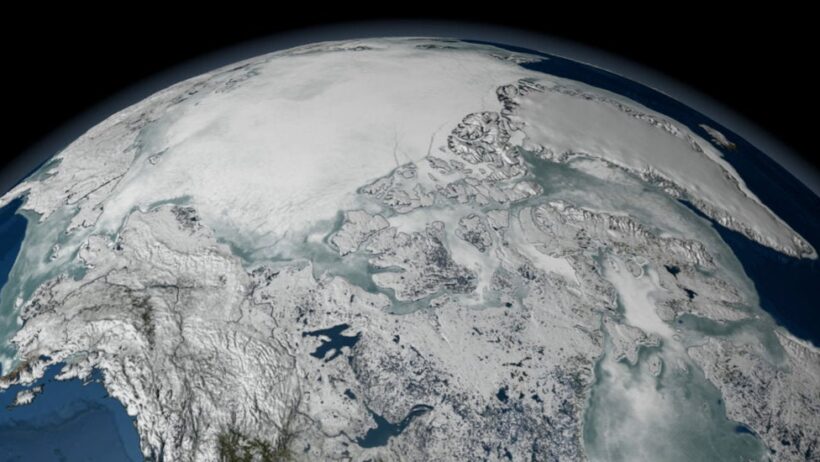The ever-evolving narrative of global warming is not merely a concern of environmentalists; it is a pressing issue that affects everything from our ecosystems to urban planning, and even global economies. Understanding the physics of a warming world invites a shift in perspective that moves beyond alarmism to a more nuanced comprehension of climatic phenomena.
At its core, global warming can be attributed to the greenhouse effect, an essential process that ensures our planet remains habitable. Solar radiation reaches the Earth, where it is absorbed and subsequently re-emitted as infrared radiation. Greenhouse gases (GHGs), including carbon dioxide (CO2), methane (CH4), and nitrous oxide (N2O), absorb and re-radiate this infrared energy, trapping heat within the atmosphere. Without this natural mechanism, Earth’s average temperature would be nearly 60 degrees Fahrenheit colder, rendering it inhospitable for most life forms.
However, human activities have significantly intensified this natural greenhouse effect, leading to an increase in global temperatures. The combustion of fossil fuels, deforestation, and industrial processes release copious amounts of GHGs into the atmosphere, causing a dramatic rise in their concentrations over the past century. This escalation correlates directly to the acceleration of global warming observed through meteorological data. The Intergovernmental Panel on Climate Change (IPCC) emphasizes that the continual rise in average global temperatures could lead to catastrophic climatic disruptions if left unabated.
Delving deeper into the physical principles, we can begin to appreciate the complex interactions between various components of the Earth’s climate system. The ocean, which absorbs about 30% of emitted CO2, acts as a heat sink, moderating the immediate effects of atmospheric warming but at a potential cost. As ocean temperatures rise, it results in thermal expansion, contributing to sea-level rise. Furthermore, the absorption of CO2 leads to ocean acidification, adversely affecting marine life and ecosystems.
Atmospheric feedback mechanisms also play a crucial role in amplifying or mitigating the effects of global warming. For instance, as polar ice caps and glaciers melt, they reduce the Earth’s albedo—the measure of how much sunlight is reflected by a surface. Darker ocean water or land absorbs more sunlight, leading to further warming in a vicious cycle. Similarly, increased temperatures cause more water vapor to enter the atmosphere, a potent greenhouse gas that amplifies warming even further.
Understanding these feedback loops is vital for predicting future climate scenarios. Climate models, which utilize complex mathematical equations to simulate physical processes, are indispensable tools. They explore various scenarios based on differing levels of GHG emissions, allowing scientists and policymakers to forecast potential outcomes and effective mitigation strategies. While some skeptics question the reliability of these models, they are built on foundational physics principles and continuously refined with empirical data.
Moreover, the science behind global warming also challenges us to rethink energy consumption. According to the laws of thermodynamics, energy can neither be created nor destroyed but can only change forms. This principle compels a shift towards renewable energy sources that can harness natural processes—like solar, wind, and hydroelectric power—without adding to the GHG burden. Transitioning to a low-carbon economy not only mitigates climate change but also promotes sustainable development, highlighting a dual promise: environmental preservation intertwining with economic viability.
Policy frameworks addressing climate change must also encompass notions of equity and justice. Developing nations, often the least responsible for GHG emissions, bear the brunt of climate change impacts, including intensified natural disasters and food insecurity. Climate justice underscores the moral dimensions of climate policy and advocates for cooperative international strategies that can alleviate the burdens faced by vulnerable populations. A physics-based understanding of global warming urges stakeholders to adopt comprehensive approaches integrating science, ethics, and human rights.
The potential effects of global warming are extensive and varied—intensifying weather events, altered agricultural yields, and disrupted biodiversity are among the many concerns inherent in a warming world. However, recognizing the interconnectedness of these phenomena can cultivate resilience. Climate adaptation strategies—like developing drought-resistant crops or enhancing urban infrastructure to withstand extreme weather—are essential complements to mitigation efforts and showcase human ingenuity in the face of adversity.
Critically, the dialogue surrounding global warming should also foster curiosity about scientific exploration. Innovations in climate science, such as carbon capture technology and geoengineering, represent humanity’s ingenuity in addressing climate challenges. While these solutions are not panaceas and demand rigorous ethical considerations, they underscore the importance of scientific inquiry and technologic evolution in our ongoing battle against climate change.
As citizens of the Earth, it is imperative to stay informed and engaged. Individual actions can collectively contribute to monumental changes; from minimizing travel emissions to advocating for systemic policy changes, the potential is vast. The physics of a warming world illustrates that accountability rests not solely on governments and corporations, but also within local communities and individuals. A deeper understanding of this complexity is not just informative—it is transformative, beckoning a proactive approach to cultivating a sustainable future.
Ultimately, grasping the physics of a warming world invites a profound responsibility. It implores us to act decisively, armed with knowledge and a commitment to equity, innovation, and resilience. Envisioning a sustainable future demands that we rethink our relationship with the environment and understand the science driving global warming, allowing us to navigate the formidable challenges that lie ahead.








